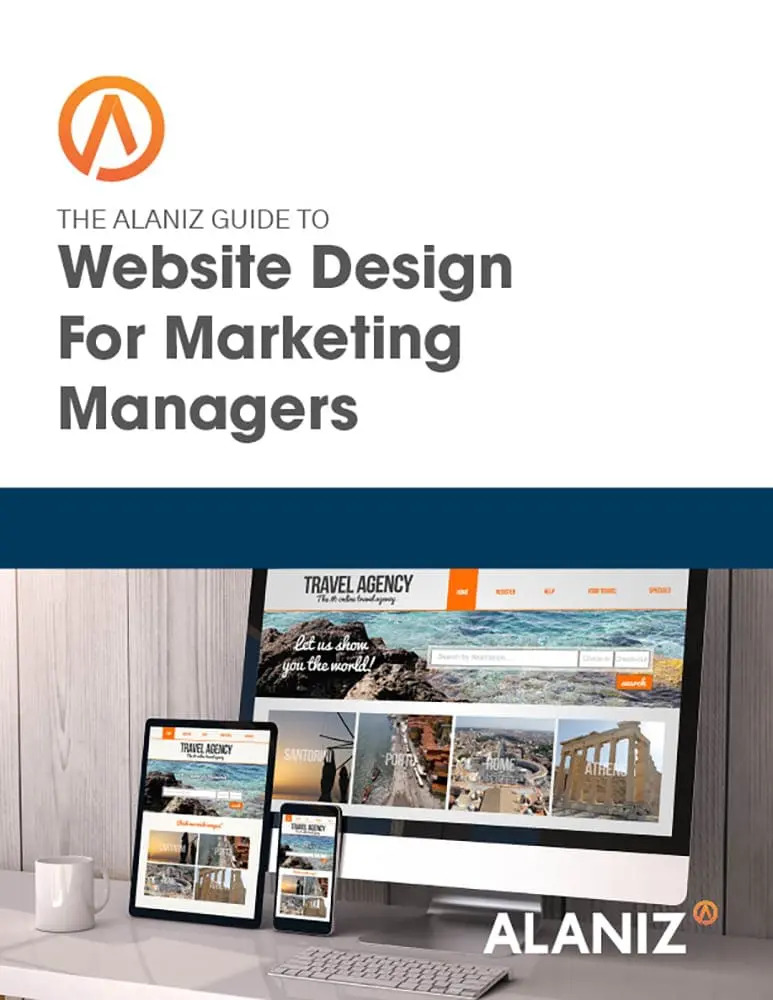This blog post is part of “The Ultimate Guide to Web Development” blog series.
You create and distribute content for consumption and shareability, right?
So, you pick a topic your target audience cares about, create a brilliant new take on it, and post it to get found via organic search or through paid promotion efforts. People discover it, read it, and with that flows your traffic, leads, ad revenue–whatever you goals are.
But, not so fast.
Great content is only one factor in what makes people click and consume.
One thing we’re learning from search engines is that user experience has a great deal to do with the search engine results.
“Google is paying more attention to your website’s user experience than you think,” explains Darren DeMatas, founder of e-commerce experts, Selfstartr.
If usability gets in the way of people getting what they want, clicks on your content can turn into back button clicks almost instantaneously.
Game over.
Looking at what Google, for example, uses to evaluate user experience will help us all create better content whether we’re trying to rank in the SERPS or want to successfully promote our content.
What’s Changed? Google Loves What Searchers Love
With the Panda and Penguin updates, Google made emphatic statements that they are more and more concerned with user satisfaction. Moz sums up, the algorithm changes were “all about on-site quality.”
Basically, Google wants people to find what they want as quickly as possible–not what marketers want them to see.
It’s not just about how optimized you are for search, it’s about making users happy so they stay longer and interact with your content.
“UX has benefits to every part of your site and its marketing, so SEO should only be one part of the equation.” — Moz Founder, Rand Fishkin
This means that even if your content reads like the Game of Thrones screenplay, has all its keywords, H1s, page titles, and meta descriptions in place; users might not like it because it’s too slow, can’t be read on a smartphone, or is too cluttered with unnecessary information.
Google will punish you for these sins and, more importantly, so will your readers by leaving your pages.
Why the Change? Because People Want Trust, Not Tricks
So, why did Google update its ranking criteria?
Well, because their users told them to.
They didn’t like being tricked by SEO press releases and deceptive headlines, or by pages that required multiple clicks and page loads to get what they wanted.
Google’s goal should be our goal: Help people find what they want as quickly as possible.
Remember: Google loves what searchers love.
Reverse engineer this equation: If we learn what Google loves, we’ll know better what our readers love. If when readers love a page they find, that page will be rewarded.
Our jobs as content marketers, whether pursuing paid or earned traffic, is to create content that people love.
Let’s leverage the metrics search engines use and fine tune all of our content efforts in hopes of creating happy and engaged new and returning readers.
How to Think Like a Search Engine
What is it about the search experience that matters so much, and how do you make sure you’re delivering the goods?
Here are three key user experience metrics that will determine how much love people and search engines alike are showing your content:
1. Page speed
I’m sure you’ve given up on a page that takes too long to load. So does everyone else, as well as search engines.
In fact, loading time is a major contributing factor to page abandonment.

(Source: Kissmetrics)
It’s also a major priority for search engines.
“At Google, we’re striving to make the whole web fast,” the company says on its Webmaster Central blog.
Faster pages mean higher ranking and more readers. But how fast is fast, and what can you do to improve?
According to the same infographic from Kissmetrics, people tend to abandon a page if it takes more than three seconds to materialize.
If you want to know what Google thinks of your page speed, be sure to visit Google PageSpeed Insights, enter the page URL desired, assess your personal speed test for a list of things you can do to improve page speed–both on mobile and desktop devices.
|
|
Here’s what a typical results page might look like:
|
Click on “Show how to fix,” and you’ll be given very specific instructions–some requiring a design and development resources. If you click on the “Optimize Images” issue, for example, you’ll be told what images can be optimized and by how much to compress them.
|
Other web speed test sites include the WordPress Speed Test and the Pingdom Website Speed Test.
2. Mobile Friendliness
Mobile devices have quickly become front runners leading search platform activity.
Research gathered by Cision shows 77% of people search on their mobile devices even when they are at home or at the office–near their desktop and laptop computers.
They use their phones instead.
Your audience will reward you if they can find and read your offer while walking, drinking coffee or even watching TV.
So what does mobile friendly mean?
First and foremost, your pages need to be responsive–fitting neatly to any display size and offering easy navigation.
It means your content has to be legible–think large type–on a phone, scrollable (no one wants to click and wait for another page to load), and speedy, as mentioned above.
How do you know if your pages are mobile friendly?
Google has a tool for that too, complete with analysis and recommendations for improvement.
It’s the Mobile-Friendly Test:
|
|
Enter your content URL and find results on whether your site meets Google’s mobile-friendly criteria.
Not too rosy for the site below:
|
|
If your content needs work, Google will ask how it was built and then direct you to resources for making it more mobile-friendly depending on the specific platform.
You can also take this Google course to help guide you along the way.
3. Page Quality
A quality web page means that the information promised in a link is front and center when a piece of content loads.
No ads, no pop ups, no distractions.
This is what makes users happy, and that’s why search engines reward it.
Google last updated its Top Heavy algorithm in 2014, which “downgrades the ranking of a web page with too many ads at the top or if the ads are deemed too distracting for users.”
The content you promise should be visible “above the fold,” meaning minimal scrolling and no clicking is necessary to get started with consuming it.
Here’s what Google tells its advertisers:
“We use a combination of automated systems and human evaluation to determine landing page experience on your site. Your ads may show less often (or not at all) if they point to websites that offer a poor user experience. If you’re trying to improve your landing page experience, it might be time to give your landing pages a tune-up.”
Google recommends:
- Provide relevant, useful, and original content
- Don’t make people hunt around for the information they might need
- Try to offer useful features or content that are unique to your site
- Don’t annoy customers with pop-ups or other features that interfere with navigation
The Top Heavy algorithm means your own content can work against you–whether using paid ads or trying to win organic traffic.
Here’s an example of how to do it right…
Say you want to learn about how user experience impacts search rankings.
Search for “user experience search ranking,” and check out the results you might get:
|
|
The top listing is an article from SEO experts, MOZ.
Click on the link and here is what it delivers:
|
|
Pretty much exactly the information you would expect without any promotional or irrelevant content muddying up the experience.
Read more on how to connect your meta description to content.
Another (un)popular practice which can damage your user experience, especially in mobile search, is the use of large sliders or banners as page headers.
If you do have images above the fold, make sure they load fast.
Here’s what Google recommends:
|
|
Also, make sure the content you offer searchers is on that page, even if they have to scroll a bit.
Forcing a visitor to click or scroll for long stretches to find the content they’re looking for won’t create a positive experience for them.
Then, there’s the issue of broken links.
Broken links are bad news for search engine ranking because they’re bad news for users — page error 404 is a credibility killer.
There are lots of free link checking tools available, including Dead Link Checker, where you can evaluate your site at will, or set regular checkups.
|
|
Conclusion: Remember What Matters Most
Remember, you want your content read and shared, and acted upon, not just clicked.
The quality of the content matters greatly, of course, but so does the quality of a reader’s overall experience.
Page speed, mobile friendliness and page quality all work together to make sure your great content succeeds in its goals of driving traffic, conversions and even ad revenue in the case that people find value in what they find.
At the same time, the content you deliver needs to help searchers solve their problems or access the information which drove them to search in the first place.
Our review of Google and their search engine ranking best practices allows content creators and marketers to stay ahead of the game by understanding what audiences want and how to make them happy.
What Google doesn’t tell you the weight of each factor, or exactly how they measure them.
Otherwise, we’d all be back to gaming the system instead of giving users what they want.
Can we all agree now, that we don’t want that.
This blog post is part of “The Ultimate Guide to Web Development” blog series.













